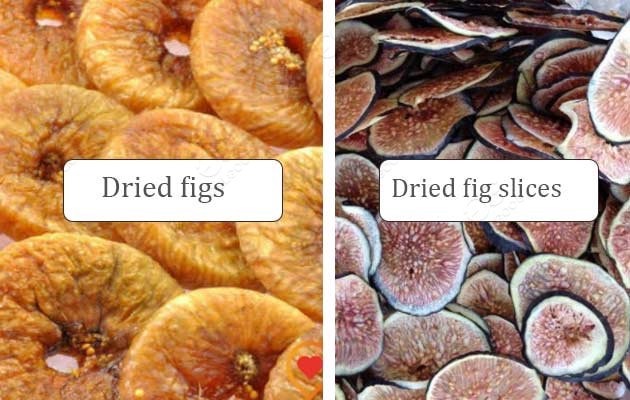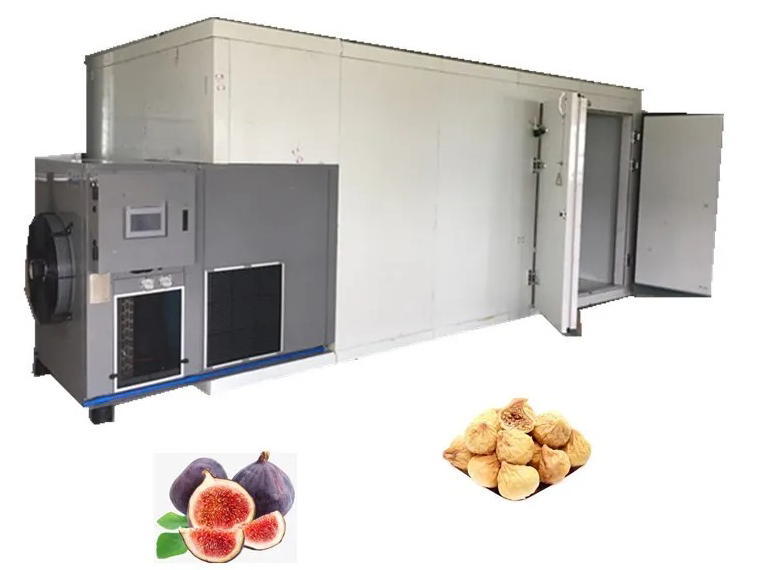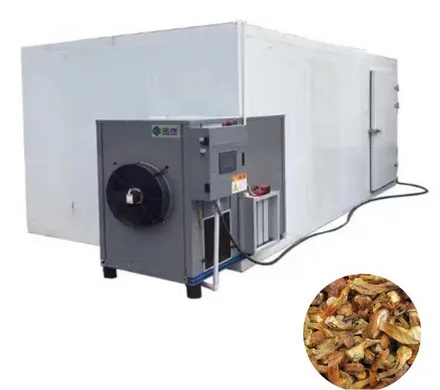
Content Menu
● Introduction
● Understanding Drying Technologies
>> Heat Pump Dryers
>>> Advantages of Heat Pump Dryers
>>> Disadvantages of Heat Pump Dryers
>> Condenser Dryers
>>> Advantages of Condenser Dryers
>>> Disadvantages of Condenser Dryers
>> Vented Dryers
>>> Advantages of Vented Dryers
>>> Disadvantages of Vented Dryers
● Comparison Table
● Applications in Food Processing
>> Heat Pump Dryers
>> Condenser Dryers
>> Vented Dryers
● Factors Influencing Your Choice of Dryer
>> Product Type
>> Production Volume
>> Energy Costs
>> Space Constraints
● Conclusion
● FAQ
>> 1. What is the main difference between heat pump and condenser dryers?
>> 2. Are vented dryers suitable for all types of food?
>> 3. How do I maintain my condenser dryer?
>> 4. Can I install a heat pump dryer anywhere?
>> 5. Which dryer type is best for preserving nutrients in food?
Introduction
In the realm of food processing, drying is a critical step that impacts the quality, shelf life, and safety of food products. As a manufacturer of food dryers, understanding the differences between various drying technologies, such as heat pump dryers, condenser dryers, and vented dryers, is essential for optimizing production processes and meeting market demands. This article delves into the intricacies of these three types of dryers, focusing on their operational mechanisms, advantages, disadvantages, and suitability for different applications in food processing.

Understanding Drying Technologies
Before we dive into the specifics of each dryer type, it's essential to grasp the fundamental principles of drying. Drying removes moisture from food products to inhibit microbial growth and enzymatic reactions that can lead to spoilage. The choice of drying technology significantly influences energy consumption, drying efficiency, and product quality.
Heat Pump Dryers
Heat pump dryers utilize a refrigeration cycle to extract moisture from food products. They operate by:
- Evaporating moisture from the food.
- Condensing the moisture in a separate compartment.
- Recycling heat generated during this process to minimize energy consumption.
Advantages of Heat Pump Dryers
- Energy Efficiency: Heat pump dryers are known for their low energy consumption compared to traditional drying methods. They can save up to 50% more energy than vented dryers due to their ability to recycle heat.
- Temperature Control: They allow for precise temperature control, which is crucial for preserving the nutritional quality and flavor of food. This is particularly important when drying sensitive items like fruits and vegetables.
- Environmentally Friendly: These dryers have a lower carbon footprint due to their efficient use of energy. They often use refrigerants with lower global warming potential (GWP), making them a more sustainable option.
Disadvantages of Heat Pump Dryers
- Initial Cost: The upfront investment for heat pump dryers can be higher than other types. This may deter small businesses or startups from adopting this technology despite its long-term savings.
- Longer Drying Times: While they are efficient, the drying process can take longer compared to vented dryers. This may not be suitable for operations requiring rapid turnaround times.
Condenser Dryers
Condenser dryers operate by extracting moisture from the air within the dryer drum and condensing it into water. The process involves:
- Heating air to evaporate moisture from food.
- Cooling this air to condense the moisture which is then collected in a tank or drained away.
Advantages of Condenser Dryers
- No Ventilation Required: They can be installed in areas without external venting options. This flexibility makes them ideal for urban settings or smaller facilities where space is limited.
- Moderate Energy Consumption: While not as efficient as heat pump dryers, they consume less energy than vented models. This makes them a viable option for businesses looking to balance cost and efficiency.
Disadvantages of Condenser Dryers
- Humidity Control: They can increase humidity levels in the surrounding area if not properly ventilated. This could lead to issues such as mold growth if the environment is not managed correctly.
- Maintenance Needs: Regular cleaning is required to maintain efficiency and prevent mold growth in the water tank. Neglecting maintenance can lead to decreased performance over time.

Vented Dryers
Vented dryers work by expelling hot air used during the drying process outside through a vent. Their operation includes:
- Heating air and blowing it into the drum.
- Exhausting moist air outside while drawing in fresh air for the next cycle.
Advantages of Vented Dryers
- Faster Drying Times: They typically dry food products quicker than both heat pump and condenser dryers due to their high-temperature operation.
- Lower Initial Cost: Vented dryers are generally less expensive to purchase than heat pump or condenser models, making them accessible for small-scale operations or startups.
Disadvantages of Vented Dryers
- Energy Inefficiency: They consume more energy due to constant heating and exhausting of air. This can lead to higher operational costs over time.
- Installation Requirements: Proper installation requires external venting, which may not be feasible in all locations or could incur additional installation costs.
Comparison Table
| Feature | Heat Pump Dryer | Condenser Dryer | Vented Dryer |
| Energy Efficiency | High | Moderate | Low |
| Initial Cost | High | Moderate | Low |
| Drying Time | Longer | Moderate | Shorter |
| Environmental Impact | Low | Moderate | High |
| Installation Flexibility | Flexible | Flexible | Requires Ventilation |
| Temperature Control | Excellent | Good | Limited |
Applications in Food Processing
Each type of dryer has its unique applications in food processing:
Heat Pump Dryers
Ideal for delicate products like fruits and vegetables where maintaining flavor and nutrients is essential. They are also suitable for herbs and spices due to their low-temperature drying capabilities. Their ability to operate efficiently at lower temperatures helps preserve volatile compounds that contribute to flavor and aroma.
Condenser Dryers
These are often used for moderate moisture foods like grains or pasta where energy efficiency is important but high-speed drying is not critical. They are also suitable for products that require consistent drying conditions without significant temperature fluctuations.
Vented Dryers
Best suited for robust items such as nuts or seeds that can withstand higher temperatures and require quick drying times. They are also commonly used in industrial settings where large volumes need processing quickly. Their fast operation makes them ideal for high-throughput environments where time is money.
Factors Influencing Your Choice of Dryer
When selecting a dryer for your food processing needs, consider several factors:
Product Type
The nature of the product being dried plays a significant role in determining which dryer is best suited. For example, heat-sensitive items like berries benefit from heat pump technology due to its gentle drying capabilities, while sturdier items like grains may perform well in vented systems.
Production Volume
High-volume operations may favor vented dryers due to their speed, while smaller operations might find heat pump or condenser models more economical despite longer drying times.
Energy Costs
With rising energy costs globally, investing in energy-efficient technologies like heat pump dryers could lead to significant savings over time, especially for businesses operating continuously.
Space Constraints
In urban settings or facilities with limited space, condenser or heat pump dryers may offer better installation flexibility compared to vented models that require external exhaust systems.
Conclusion
Choosing between a heat pump dryer, condenser dryer, or vented dryer ultimately depends on specific needs such as energy efficiency, drying time requirements, product type, and installation constraints.
Heat pump dryers offer an excellent balance between efficiency and product quality but come with a higher initial investment. Condenser dryers provide moderate efficiency with flexible installation options but require regular maintenance. Vented dryers excel in speed but at a cost to energy consumption and environmental impact.
Understanding these differences allows manufacturers like us to tailor our offerings to meet the diverse needs of our clients in the food processing industry effectively. By considering factors such as product type, production volume, energy costs, and space constraints, businesses can make informed decisions that enhance productivity while maintaining product quality.

FAQ
1. What is the main difference between heat pump and condenser dryers?
Heat pump dryers recycle heat during the drying process, making them more energy-efficient than condenser dryers, which expel heat into the environment while condensing moisture.
2. Are vented dryers suitable for all types of food?
While vented dryers are effective for robust items like nuts or seeds that can tolerate high temperatures, they may not be ideal for delicate foods that require lower temperatures to preserve flavor and nutrients.
3. How do I maintain my condenser dryer?
Regularly empty the water tank if it's not connected to a drain line, clean lint filters after each use, and periodically check for any blockages in vents or ducts to ensure optimal performance.
4. Can I install a heat pump dryer anywhere?
Yes, heat pump dryers do not require external ventilation like vented models do; therefore, they can be installed in various locations as long as there's adequate space for airflow around them.
5. Which dryer type is best for preserving nutrients in food?
Heat pump dryers are best suited for preserving nutrients because they operate at lower temperatures compared to condenser and vented dryers, minimizing nutrient loss during the drying process.











